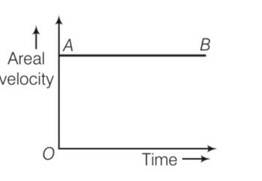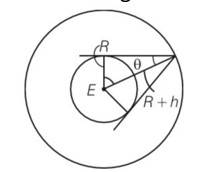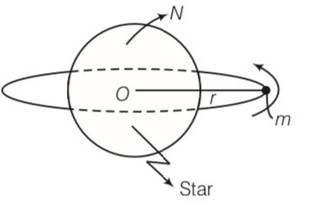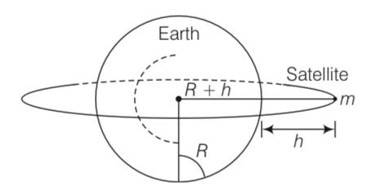Class 11th
Get insights from 8k questions on Class 11th, answered by students, alumni, and experts. You may also ask and answer any question you like about Class 11th
Follow Ask QuestionQuestions
Discussions
Active Users
Followers
New answer posted
5 months agoContributor-Level 10
This is a Short Answer Type Questions as classified in NCERT Exemplar
Explanation-

areal velocity of a planet revolving around the sun is constant with respect to time.
New answer posted
5 months agoContributor-Level 10
Explanation- examples of central force – gravitational force and electrostatic force
Examples of non central force = nuclear force, magnetic force acting between two current carrying loops etc.
New answer posted
5 months agoContributor-Level 10
This is a Short Answer Type Questions as classified in NCERT Exemplar
Explanation-air molecules in the atmosphere are attracted vertically downward by the gravitational force of the earth just like an apple falling from the tree. Air molecules move randomly due to their thermal velocity and hence resultant motion of air molecules move randomly in vertical downward direction. But in case of apple it is heavier than air so it fall downwards only.
New answer posted
5 months agoContributor-Level 10
This is a Long Type Questions as classified in NCERT Exemplar
Explanation- rp= radius of perihelion =2R
Ra = radius of aphelion =6R
So ra=a(1+e)=6R
And rp= a(1-e)=2R
Solving above eqns
We get e = ½
By conservation of angular momentum angular momentum at perigee= angular momentum at apogee
So mvprp=mvara
Va/vp=1/3
Where m is mass of satellite .
By conservation of energy , energy at perigee =energy at apogee
-
So
Vp= =
Vp=6.85km/s , va=2.28km/s
So orbital velocity vc=
R=6R ,vc= 3.23km/s
Hence to transfer to a circular orbit at apogee , we have to boost the velocity by 3.23-2.28=0.95km/s.
New answer posted
5 months agoContributor-Level 10
This is a Long Type Questions as classified in NCERT Exemplar
Explanation-let m be the mass of the earth vp, va be the velocity of the earth at perigee and apogee respectively. Similarly wp and wa are angular velocities.

At perigee, at apogee
If a is the semimajor axis of the earth's orbit then rp=a (1-e) and ra=a (1+e)
= 0.00167
Let w be the angular speed which is geometric mean of wp and wa and corresponding to mean solar day.
=1.0691
If w corresponds to 10 per day then wp = 1.0340 per day and wa= 0.9670 per day . since 3610=24, mean solar day we get 361.0340 which corresponds to 24h,8.14' and 360.9670 corresponds to 23h59min52'. So
New answer posted
5 months agoContributor-Level 10
Explanation- mass of earth M = 6
Radius of the earth , R = 6400km= 6.4
T=24h= 24
G = 6.67 10-11Nm2/kg2
(a) Time period T =
= 2
= ( )1/3
( )1/3-R
So after solving we get h = 3.59
(b) If satellite is at height h from the earth's surface

Cos = = cos81018'
= 81018'
=2(81018')= 162036'
If n number of satellite needed to cover entire the earth then
So n = 3600/2 = 2.31
So minimum 3 satellite are required to cover entire earth.
New answer posted
5 months agoContributor-Level 10
This is a Long Type Questions as classified in NCERT Exemplar
Explanation- consider a diagram having vertices A,B,C,D,E and F

AC= AG+GC=2AG
= 2lcos300= 2l
=
AD=AH+HJ+JD= lsin300+l+lsin300=2l
Force on mass m at A due to mass m at B is f1= along AB
Force on mass m at A due to mass m at C is f2= along AC
Force on mass m at A due to mass m at D is F3= along AD
Force on mass m at A due to mass m at E is F4= = along AE
Force on mass m at A due to mass m at F is F5= along AF
Resultant force due to F1 and F5 is F1=
= along AD
So net force along AD = F1+F2+F3=
New answer posted
5 months agoContributor-Level 10
This is a Long Type Questions as classified in NCERT Exemplar
Explanation- when a body og mass m is revolving around a star of mass M.

Linear velocity of the body v= so when r increases then v decreases.
Angular velocity of the body w = 2
According to kepler's law T2 r3
So T= kr3/2
So w= so when r increases, w decreases.
Kinetic energy of the body K= 1/2mv2=1/2m ( ) so when we increase r, KE decreases.
Gravitational potential energy of the body
U=-GMm/r
So when we increase r, PE becomes less negative
Total energy of the body E= KE+PE=
When r increases total energy becomes less negative . i.e increases.
Angular mom
New answer posted
5 months agoContributor-Level 10
This is a Long Type Questions as classified in NCERT Exemplar
The chemical properties and physical properties of the elements depends upon its outer electron configuration which ultimately is the periodic function of the atomic number. The elements which possess the same outer electron configuration belong to the same group or family showing similar properties.
New answer posted
5 months agoContributor-Level 10
This is a Long Type Questions as classified in NCERT Exemplar
The amount of energy required to remove an electron from the outermost shell of an isolated gaseous atom in its ground state is said to be ionisation enthalpy.
The factors that affect ionization enthalpy of the elements are as follows:
(a) Effective nuclear charge with its increase the ionization enthalpy also increases
(b) Atomic size with its increase the ionization enthalpy decreases
(c) The e-e - repulsion with its increase the ionization enthalpy decreases
(d) Whenever there exists half filled or completely filled orbital than it lead to increase the ionization enthalpy b
Taking an Exam? Selecting a College?
Get authentic answers from experts, students and alumni that you won't find anywhere else
Sign Up on ShikshaOn Shiksha, get access to
- 65k Colleges
- 1.2k Exams
- 679k Reviews
- 1800k Answers

